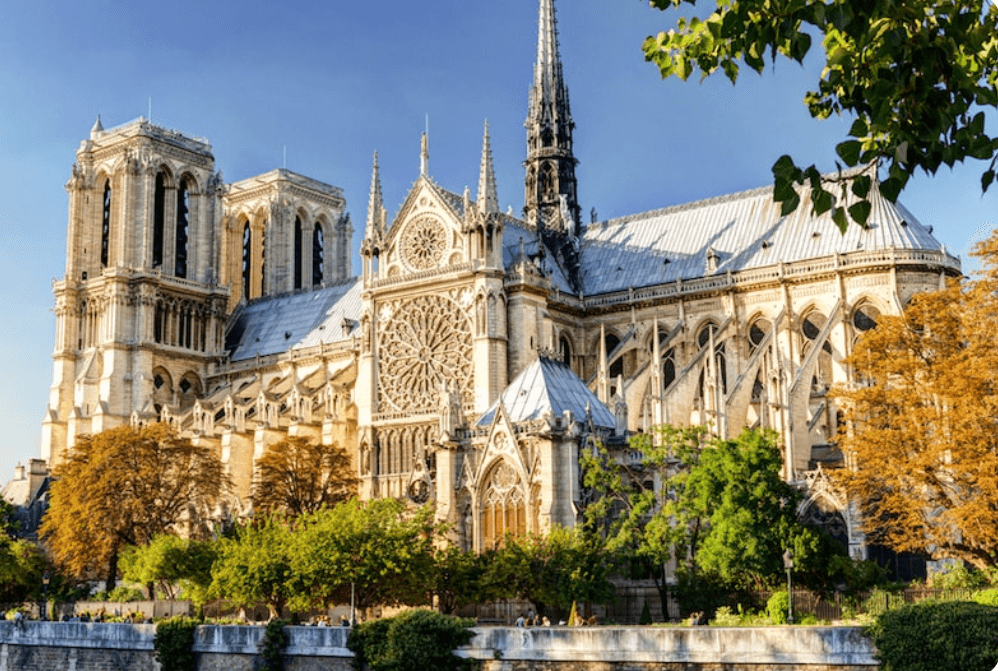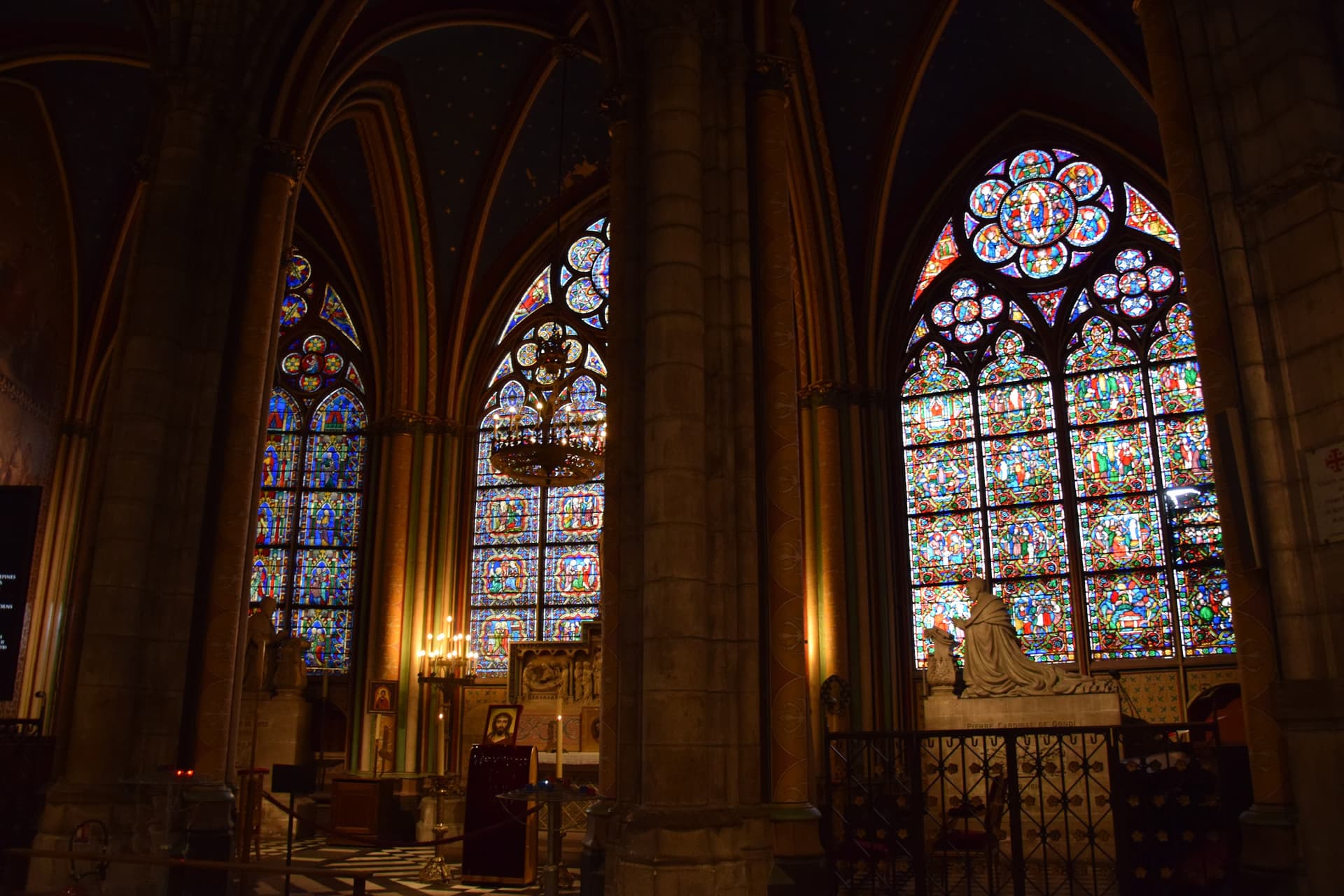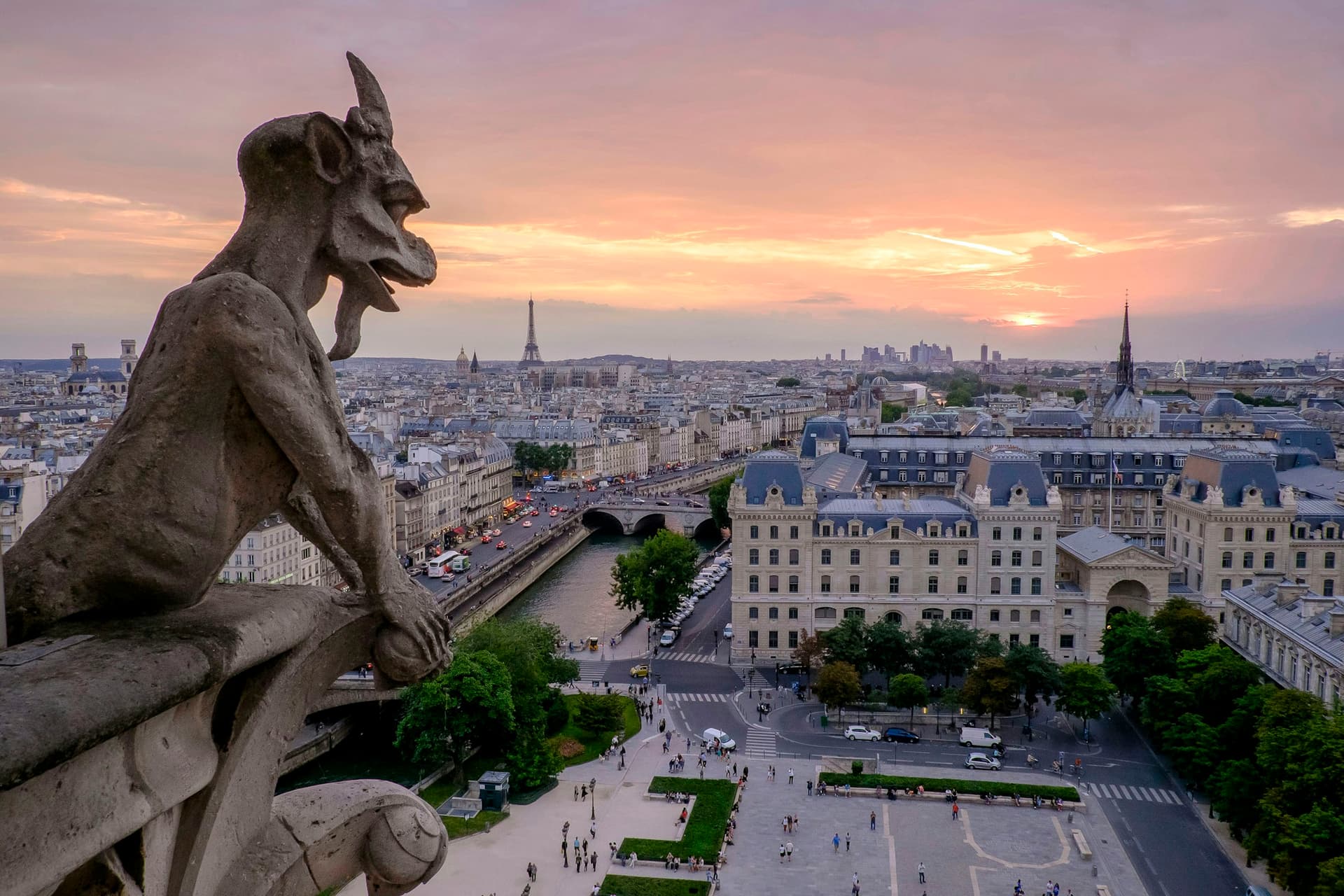Audio GuideCathédrale Notre-Dame de Paris
Towering, 12th-century cathedral with flying buttresses & gargoyles, setting for Hugo's novel.
Rising above the heart of Paris on a small island in the Seine River, Cathédrale Notre-Dame de Paris draws visitors from all over the world. Its towers, stretching high above the city, have watched nearly nine centuries of Parisian life pass by. The cathedral’s story begins in the twelfth century, when crowds of workers laid the first stone at the command of King Louis the Seventh and Pope Alexander the Third. Though funding delays stretched construction almost two hundred years, Notre-Dame emerged as a masterpiece of Gothic design: long, graceful, with pointed arches, ribbed stone vaults, and the now-famous flying buttresses that helped support the enormous stone walls.
Across time, men and women have gathered in these halls for legendary events—kings were crowned here, emperors like Napoleon claimed their thrones, and the city marked both celebrations and tragedies. The French Revolution nearly erased the cathedral’s statues, including the row of twenty-eight stone kings on the facade. Many lost their heads under orders to erase all royal symbols, but parts survived, hidden and buried until found centuries later and now displayed in museums.
Art and legend give Notre-Dame its unique character. The gargoyles and mysterious chimeras perched on the balustrades were added during the great nineteenth-century restoration led by Eugène Viollet-le-Duc. It was another Parisian—author Victor Hugo—who rescued the building from ruin with his famous novel about the hunchback bell-ringer, inspiring the city to restore its beloved landmark.
Sunlight streams through magnificent stained glass rose windows, washing the lofty stone columns in soft color. While many windows date from the nineteenth century, three great roses from the thirteenth century still glow with their original glass, a connection to the Middle Ages. Sacred relics, such as the Crown of Thorns believed to have been worn by Christ, and historic artifacts are housed within the cathedral, drawing pilgrims as well as tourists.
Whispers of mystery surround the place. One legend tells of a craftsman who worked on the cathedral’s great iron doors, said to have completed them only after a midnight visit from a dark spirit.
Throughout the ages, Notre-Dame’s bells have filled the air with rich sounds. The oldest, Emmanuel, has greeted Parisians since the late seventeenth century and rings during major events.
On April fifteenth, two thousand nineteen, flames devoured much of the roof and destroyed the elegant nineteenth-century spire. Yet, just as in the past, efforts to save the cathedral united people around the world.
Today, Notre-Dame stands as a powerful symbol of French identity, history, and culture. Its layers of architecture, legendary details, and ongoing restoration invite visitors to witness a living story, one shaped by faith, art, and an ever-changing city.



